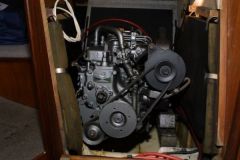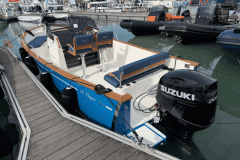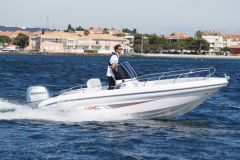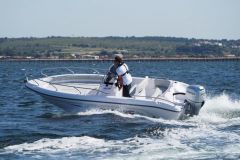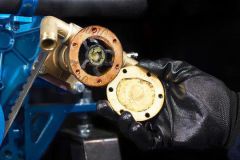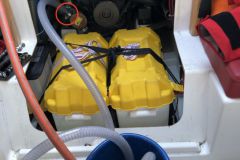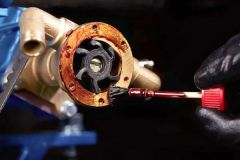A broken belt on an inboard motor can have serious consequences for the boat and its crew. However, it is possible to anticipate this breakdown:
- by checking them regularly;
- knowing how to replace them at sea in the event of unexpected breakage, in order to keep the engine running;
- by looking at the reason why they broke, to anticipate the breakdown.
A ship without fire in the middle of the night
Visit Croque soleil sailing under a starry sky, all sails set. Georges takes his midnight watch. He climbs into the cockpit, where Janine tells him that all is well, and that night sailing is a real treat. Sitting on the bench, he raises his head to look up at the sky, and lo and behold... The stars are beautiful, but the one that should light up the top of the mast has just gone out. No more navigation lights: the most important star for the Croque soleil no longer flickers. He goes down to the electrical panel: the voltmeter on the solar panel regulator shows 3 volts for the service battery.
- Janine, we've got a flat battery.
- Ouch already! How come?
- I don't know, it's been a long time since we've sailed at night. She must be running out of charge, and we can't rely on the solar panels to recharge her until tomorrow morning.
- OK, and the machine's in good condition?
- Yes, that's it, you can start, it'll give us a bit of light and the GPS too.
Janine starts the engine from the cockpit, then Georges couples the batteries to recharge the engine and service batteries via the alternator.
BAAMMM!!! A shattering noise resounds in the engine room. Janine stops the engine for safety, and Georges opens the companionway hatch to gain access.
- The belt broke, Janine!
- Damn, give me the emergency light to make the boat visible and replace it.
By the light of his headlamp, Georges finds the spare strap, the toolbox and replaces it. It's all routine for a man who knows his boat inside out.
- It's all right, it's brand new, Janine, you can get started.
- OK
VRROOOUUUUMMMMM. The engine starts. The crankshaft pulley drives the belt, which turns the alternator. This recharges the service battery. Part of the current is used directly by the electrical panel, providing sufficient voltage for the GPS and navigation lights to operate. The battery recharges and the instruments operate correctly. Visit Croque soleil has succeeded in its nocturnal parade and can now continue on its way.
Check belt condition
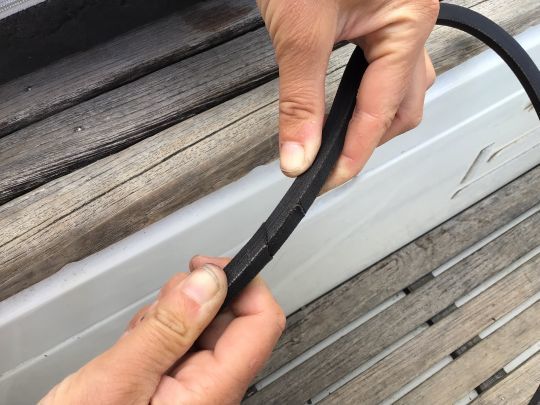
Belts can break if they are in poor condition. It is important to regularly check that there are no tears and that they are sufficiently taut:
- If belt tension is too high, there's a risk of forcing the bearings of the various components they drive, and causing them to fail too quickly.
- Too little tension can cause them to slip and wear prematurely.
A manufacturer's recommendation also offers the possibility of preventive replacement, at set intervals, to avoid the risk of avoidable breakdowns.
Replacing a belt on an inboard motor
To dismantle a belt if it hasn't already broken, loosen the alternator's adjusting screw and rotate it as far as possible to loosen it as much as possible so that you can remove it.
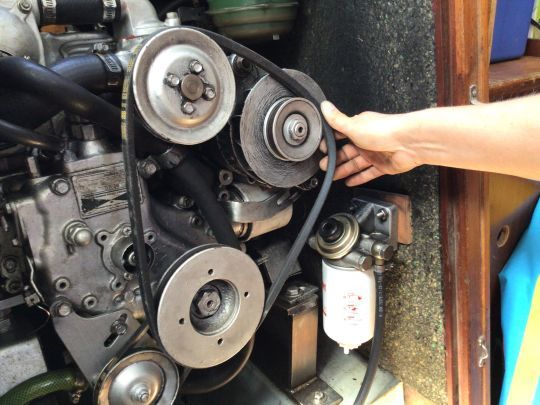
For reassembly, the new belt can be put back on, paying careful attention to the mounting direction. This precaution is all too often neglected. If there is no arrow indicating the direction of installation on the belt, and the belt turns clockwise, it must be installed with the writing in the direction of reading.
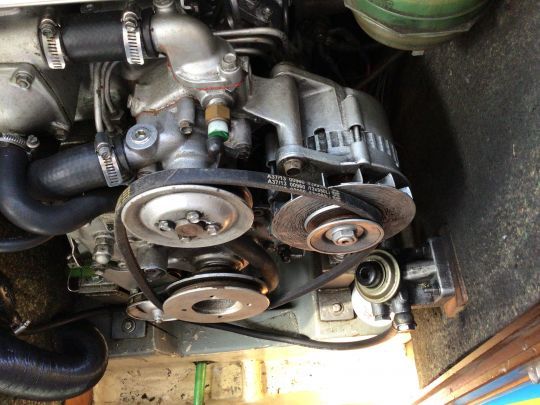
Finally, once the belt has been reassembled, it must be properly tensioned. If there's no screw to adjust this tension, you'll have to lever the alternator to tension the belt sufficiently, and tighten the locking screw at the same time. This is the most delicate operation, and can be nerve-wracking. In fact, it's advisable not to pry on the alternator with a crowbar or other object that could damage the alternator housing. A wooden or plastic hammer handle is often part of the on-board toolbox and is well-suited.
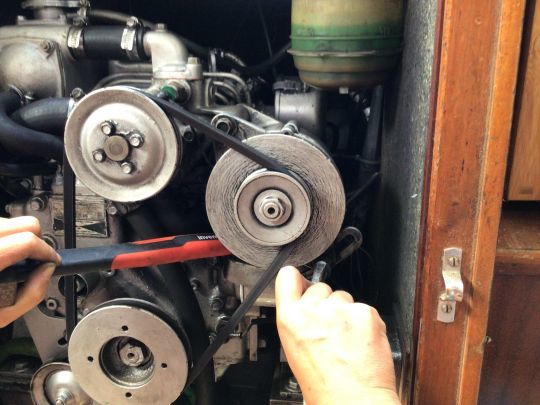
Finding the right tension setting for a belt can often be daunting. How do you determine the right tension? You've probably heard of one of two techniques:
- It should be possible to turn the belt a quarter turn and no more
- When pressed with the thumb, the belt should move a maximum of 1 cm
They are generally valid and give an idea of the correct tension setting. But depending on the length of the belt, more precision may be required. Experience will determine the accuracy of the setting. Don't hesitate to ask an experienced person to help you find the right tension. A full-load test can validate the correct belt tension setting: if it slips, it's not sufficiently tensioned.
Troubleshooting, diagnostics and prevention
When a breakdown occurs, it is important not only to replace the damaged part, but also to find the cause, otherwise the new part will deteriorate again. In the case of the Croque soleil the alternator had a belt that was showing signs of weakness, namely the beginning of a tear. With the battery flat, the high stresses placed on the belt by the alternator caused it to break.
As another cause of belt breakage, it's important to check that the pulley grooves are in good condition, with no rust or roughness that would deteriorate the belt too quickly.
It's also important to check the general condition of the engine, especially if there are any leaks, such as seawater or oil. These liquids wear down the belts as they come into contact with them.
Finally, it's a good idea to have at least one spare belt, so that you'll be able to replace it if it breaks down at sea. Make sure you have the necessary tools for the operation, and practice doing it at least once in port, as everything is more delicate at sea.

 /
/ 



